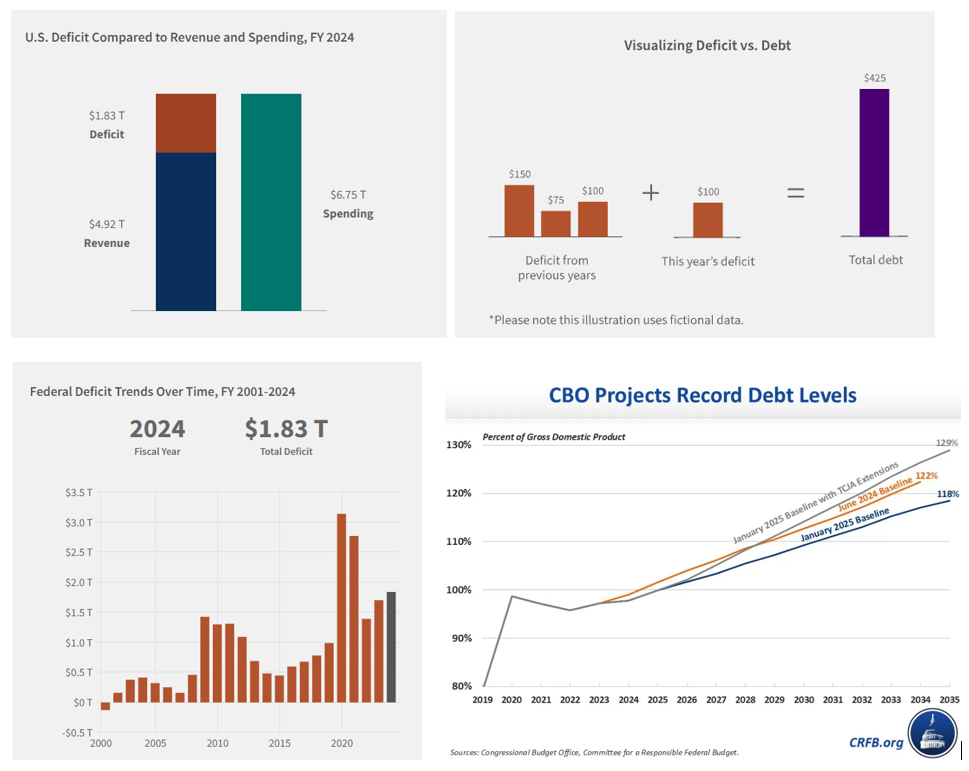
Higher Credit Score Means Enhanced Creditworthiness & Lower Interest Rates
OK … what do credit scores have to do with the financial future of America? Admittedly, the U.S. does not have a credit score in the typical sense of the term … but conceptually the principle of improving the fiscal health of our country remains consistent with how credit scoring works for individual taxpayers. So, hang in with me for a bit as we build on this analogy.
Credit Scoring … How It Works for Individuals
Credit scoring is a statistical analysis of your credit history to assign a numerical range of 300 to 850 to evaluate how likely you are to repay a loan or other debt. Here’s the point further emphasized in the highlighted text below … higher credit scores drive down interest rates!
Average personal loan interest rates by credit score
A good or excellent credit score may get you an annual percentage rate (APR) that’s two to three times lower than what you’d get with a fair or bad credit score. Interest rates for good credit are typically around or below the national average. A fair or poor credit score could mean an APR that rivals credit card interest rates.
This table outlines the average interest borrowers pay by credit score, based on Bankrate research.
Credit score | Average loan interest rate |
720-850 | 10.73%-12.50% |
690-719 | 13.50%-15.50% |
630-689 | 17.80%-19.90% |
300-629 | 28.50%-32.00% |
How Does This Apply to Our Nation?
It’s no secret … the U.S. is mired in debt driven by deficit spending. That means the same financial dynamics for the country as with individuals … cost of borrowing to keep the federal budget afloat means:
- Higher interest rates
- Lower perceived creditworthiness means “lenders”, those buying U.S. Treasuries, demand higher interest to compensate for the added risk of not being repaid.
Take a look at the following Treasury Department illustrations of what deficit spending looks like, how it compounds annually and the U.S. current level approaching $3.5 Trillion! You must agree … unsustainable.

Government borrows to finance its deficits because printing money would cause massive inflation.
What’s the remedy? An aggressive effort to Lower Expenses & Reduce Debt.
DOGE – Department of Government Efficiency
DOGE was created by President Donald Trumpvia an executive order he signed that authorizes DOGE, led by Elon Musk, to carry out its mission by July 4, 2026. The objective is to cut federal spending, shrink the government's workforce and increase the efficiency of federal agencies. Musk’s stated goal is savings of $1 Trillion in 2025 and a total of $2 Trillion by Independence Day next year.
We’ll see how that pans out but consider the impact on the U.S. economy and cost of borrowing with the potential of a $2 Trillion cut to the $3.5 Trillion deficit presented above.
Three items make me optimistic that we’ll enjoy significant economic success from DOGE initiatives.
- As of this writing DOGE claims over $105 Billion in savings so far this year.
- When commenting on just one major budget line-item agency Musk described it as, “A target-rich environment for saving money”.
- In an interview, he referred to DOGE's stated goal to modernize federal technology and software to maximize governmental efficiency and productivity as, “It’s not rocket science … I know rocket science”.
Successes at whatever magnitude will result in cutting or eliminating deficit spending plus reduction in the cost to attract and maintain investors in U.S. Treasuries at market rates consistent with the increased creditworthiness of our nation. How much and how fast remains to be seen, but all points to the probability for positive progress and intensified pressure on interest rate reductions.
The Fed Weighs In
On March 19, the Federal Reserve held firm on maintaining the benchmark interest rate. That said, Treasury officials anticipate another 50 basis points cut by year end. Typically, the Fed reduces in 25 basis points increments so the expectation is two reductions later this year.

Of note is the Fed announcement to scale back on reducing the bonds it holds on its balance sheet. That means the target reduction may be eliminated by mid-year. That coupled with positive inflation data would drive further reductions in the Federal Funds rate.
Takeaways
Agreed … there are geopolitical considerations as well as the impact on President Trump’s approach to tariffs, deregulation and tax reform that may affect future interest rate reductions. That said, I believe there is enough evidence of slashing expenses and deficit reduction that foretells lower cost of borrowing and a major driver of positive economic growth for the U.S. this year and next.
Whether becoming a landlord was a choice or a result of circumstance, it doesn’t change
the fact that managing any property comes with its challenges… and we want to help.
Give us a call or drop an email. We’ll respond promptly to relieve
your stress and help you evaluate your property management options
plus maximize your rental property return on investment.






